CONFESSIONS of a Club Convention Planner
The Secret to a Successful Annual Club Meet Is In the Planning. But What Happens When You’re Faced With High Winds, Heavy Rain…and Cumbersome Group Photos…
Editor’s note: Regular readers will recognize Curt McConnell as a fan of Ford pickup trucks from his “Ruby, the Farm Truck” series, and from his articles regarding his extensive home shop and his collection of 1930s Plymouths. Here we’ll see another facet to his involvement with the hobby.
Hosting a car club convention requires many of the same skills needed to restore a vintage vehicle—vision, persistence, resourcefulness, attention to detail and, yes, the ability to improvise.
Even so, the best-laid plans can go awry, as my wife Carolyn and I discovered while hosting the Moon Car Club's fifth annual convention in Lincoln, Nebraska, last June.
For those of you who aren’t familiar with Moon vehicles, from 1906 to 1930, the Moon Motor Car Co. of St. Louis made Moon, Diana, Windsor and Ruxton autos. The relatively new Moon Car Club appeals to restorers by attempting to locate all extant Moon products; reproducing owner’s manuals, parts listings and other factory literature; replicating parts, and using annual meetings to give members the chance to inspect as many Moon products as possible by touring car collections both public and private.
The club’s first two conventions, in 2011 and 2012, were held in St. Louis, followed by annual meetings in Vancouver, British Columbia, in 2013, Atlanta in 2014 and Lincoln this year. At each meeting the organizers do their best to provide club members with opportunities to learn as much as possible about their Moon automobiles and build on the experiences of the earlier events.
Yet problems do arise...
Five General Rules
On the plus side, our 33-page Guidebook of Activities proved to be a hit at the 2015 Moon Car Club meet, at least to judge from the many compliments it received. To make it eye-catching, we reproduced a colorful Art Deco postcard on the cover.
But if problems are actually “learning opportunities,” I’ve earned my diploma in convention planning. Drawing from my experiences, I’d advise anyone planning a car club convention to follow five general rules:
1. ACT EARLY and often. After touring several Lincoln motels, we reserved a block of rooms in an ideal location in October 2014, a full seven months before the convention. Similarly, we booked a banquet room, museum tours and the like months in advance. As show time neared, I called the motel, museums, caterer, winery, restaurants and others not once but several times to ensure that no problems would arise.
2. DRIVE THE event routes. In December, I drove the routes from the host motel to everywhere our car club planned to visit, including the approximately 120- mile route to Kearney, Nebraska, which offers several transportation-related attractions, and Minden, Nebraska, home to the legendary car collection at Pioneer Village. This accomplished two goals:
One, it allowed me to prepare the guidebook, which contained step-bystep instructions, maps, precise mileages, exact travel times and even street addresses for GPS users. With our mixture of photos (both historic and current), maps and directions, our guidebook contained everything necessary to direct the convention.
Two, when visiting each museum or other attraction, I took photographs, both for a preview article in the club magazine and for the meet guidebook, and collected enough promotional pamphlets to include in an information packet for each meet attendee.
3. HAVE A back-up plan for everything. We knew that anything from mosquitoes to tornado warnings could spoil our only outdoor gathering: a Thursday night meet-and-greet at a local winery. We’d therefore created Plan B, using a motel meeting room, which we’d reserved. Likewise, we had options in mind should a restaurant lose our reservations or otherwise fail to accommodate us.
4. MAKE A list of supplies for each event. We planned to provide everything from bug spray to umbrellas, disposable cups to bags of ice—among many other things—for an outdoor reception. Without a list to guide us, however, we would have surely forgotten something as we rushed about. Corollary to this rule: Pack all the gear for each activity into a tote or spare laundry basket. That way, you can simply grab it and go when the time comes.
5. PREPARE AND follow a countdown checklist. This is the grand checklist, telling us what we couldn’t trust to memory: what to do, in what order, to ensure all was in readiness for the meet.
Following our countdown checklist, on the Monday before the meet began I called the restaurants, museums and other attractions one last time to confirm our all-important reservations. I also mowed the grass around my car building, which was on the tour.
Tuesday, I polished and vacuumed my Moon Co. car, a 1927 two-door Diana that I’ve owned for more than a dozen years.
Wednesday, I delivered the box of information packets to the host motel, which handed them out as our members checked in...and so forth.
The countdown checklist also mapped out our movements for a very busy Friday afternoon, which involved driving, hauling and setting up for both a reception and the banquet to follow.
Rain and Various Delays
Below, I'll outline the specific problems that cropped up during the Moon club’s 2015 three-day meet and then suggest how we might have avoided the difficulties we encountered—suggestions that may prove useful to anyone organizing a club convention.
First, the three main problems that arose during our Thursday-Saturday convention in early June:
Thunderstorms and high winds forced us to cancel our opening event at the winery near our host motel in Lincoln. We improvised by using the previously reserved small but cozy banquet room at the motel. We made the decision to cancel the winery event Thursday morning, allowing us plenty of time to announce the change to club members as they checked in at the motel throughout the day Thursday.
The next morning, Friday, our guided tour of Speedway Motors’ Museum of American Speed ran 45 minutes beyond the 2 1/2 hours we were told to budget. Make no mistake: the museum is a worldclass attraction and was a highlight of our convention. It simply ran long, so that instead of leaving for lunch at 11:30 a.m. we left at 12:15 p.m. or a bit later.
This was no great problem for the group because the afternoon was free for Lincoln sightseeing. Had our Friday afternoon schedule been tight, however, the morning delay may have disrupted our afternoon plans.
Unlike other members of the group, however, Carolyn and I were facing a tight timeline because we needed to set up for a late-afternoon reception and an evening banquet. The museum delay forced us to jettison the group and skip lunch at a downtown Lincoln eatery. After rushing around all afternoon, we finished our set-up chores with just minutes to spare.
Our greatest challenge, however, came during a very full Saturday road trip, the finale of our meet. It was critical to hit the road at precisely 8 a.m. for the twohour drive westward on I-80 to Kearney. (Club members either drove themselves or car-pooled with others.)
In Kearney, we’d planned to tour the Classic Car Collection from 10 to 11:30 a.m., eat together at an Italian buffet restaurant from 11:45 a.m. to 12:30 p.m. and then split up to follow our fancies until 2 p.m., when we’d drive 20 miles south to tour Pioneer Village in Minden.
The post-lunch 90-minute free period, an antidote to the one-size-fits-all bus tour that many clubs adopt, was designed to allow club members to visit whichever one of Kearney's many transportationrelated museums and attractions that most appealed to them. (Our guidebook even included directions to Central Auto Electric, which has been in business for some seven decades.)
Chaos Trumps Order
As you may have guessed, chaos trumped order from the git-go on Saturday.
At our Friday night banquet, club officers called for a group photo at the motel at 7:45 a.m. Saturday so it could include two attendees who were returning home early.
This surprise photo shoot spelled disaster for the day’s precise schedule. By the time 28 people dribbled into the motel lobby and then tromped outside to pose as several people took photos with various cameras, we’d overshot our 8 a.m. departure time. It was, in fact, nearly 8:30 a.m. before the cars began rolling toward Kearney. Coffee breaks and rest stops en route further delayed the caravan.
The result: Some meet participants were only halfway through the Classic Car Collection--home to a 1922 Moon and another St. Louis-made auto, a 1921 Gardner--when, at 11:30 a.m., it was time to head to lunch.
It is pointless, of course, to slavishly follow an itinerary—which is merely a paper plan—but falling behind schedule does come at a price. The many people who chose to linger at the museum ran short of time to explore other Kearney attractions after their late lunch.
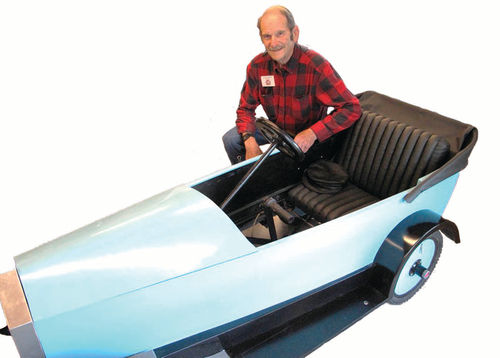
So, What Could Have Been Done Differently?
Let’s look at the problems one by one, starting with the Thursday evening meetand-greet at a local winery. By scheduling an outdoor event, we joined promoters of baseball games and outdoor concerts in spinning the weather roulette wheel. We lost.
By making one minor change, however, we could have stacked the odds greatly in our favor.
In fact, we threw in the towel over a lousy $50 platter of meat and cheese. Here’s how: The winery allowed us to eat our own snacks at their outside tables but local health regulations prevented us from bringing those snacks inside. The solution: lose the snacks! Had we done that, we could have visited the winery rain or shine.
Crown a Coordinator
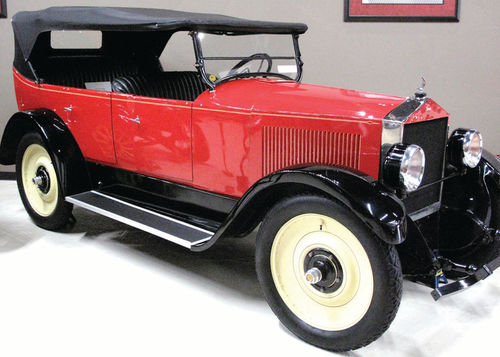
The solution to problems two and three, the overly long museum tour and the busted Saturday schedule, springs from a single idea: create an ongoing position of “convention coordinator” for the club. This would benefit any car club that farms out convention planning to different hosts each year.
Although we had attended three of the club’s four previous conventions, Carolyn and I were nonetheless greenhorns as hosts. We did many things right, mind you, but with some extra guidance—sage advice from an experienced convention coordinator, that is—we might have avoided the problems that did arise.
Some Good Decisions…
Regarding what we did right, one of our best decisions was to schedule two buffet-style meals—an Italian lunch and a prime-rib dinner—on Saturday, our busiest day. Buffets are an excellent way to get tour members good meals quickly. Nothing is harder on a schedule than to have 30 people (or more!) order food simultaneously and thereby completely overwhelm a restaurant’s kitchen staff.
As to the previously mentioned Guidebook of Activities that we prepared for the Moon meet: although its preparation was time-consuming in the extreme, it was well worth the effort. Its main goal was to provide simple, step-by-step directions on this order: “3. West on Pine Lake Road 3.0 miles to the traffic light at S. 14th Street. Prepare to turn right.”
The work came in not only driving the routes and tracking the distances (written in boldface so they’d be especially easy to find) but in drawing “stick maps”— handmade maps containing only essential details and therefore easy to absorb at a single glance.
We printed itinerary items (arrivals and departures) in red, using a type size slightly larger than body type, and used italic type to provide background details or point out landmarks on the route. Furthermore, as noted above, we incorporated current and historical photos (more than 30 in all, including old and new photos of the Covered Wagon, a 1932 highway landmark just west of Kearney.) Because the guidebooks were spiralbound, users could fold the pages back on themselves and hold the guidebooks in one hand.
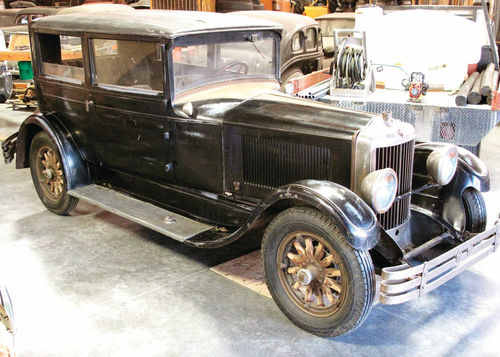
Passing Along Your Success Stories
A good way to circulate the details of such convention successes is through the above-mentioned officer-level position of convention coordinator. Typically, car clubs appoint various officers for specific tasks: a membership secretary to mail dues notices, an editor to prepare the club’s magazine, and a treasurer to handle income and expenses.
Given that many car clubs have but a single annual meeting, it is surprising that so few have named a convention coordinator to direct this all-important get-together.
Car clubs typically stage annual conventions for five main reasons: 1) Tour with or show (and often judge) members’ automobiles. 2) Present speakers on various restoration subjects. 3) Travel as a group to museums or other destinations, either auto-related or otherwise. 4) Hold a business meeting. 5) Allow club members the chance to socialize with one another and discuss their automotive projects.
Regardless of the reasons behind a car club's annual convention, however, participants will obviously get more out of a well-run meeting than one where important details are left to chance.
I envision a convention coordinator as maintaining a library of past convention handouts; advising hosts on the basics of convention planning (locating the perfect motel headquarters, finding a banquet caterer, etc.); and performing some of the time-consuming activities that can burden a host.
A convention coordinator, for instance, can line up club members who are willing to help set up the banquet room (possibly in exchange for a half-price meal) and arrange for printing the convention guidebook--something that became a terrific headache for me when my own printer stumbled badly while the final countdown was on.
Enter the Club “Enforcer”
Perhaps most important, the coordinator could appoint a different person each day of the convention to act—if I may borrow a roller derby term—as an “enforcer.” (Again, you might offer a halfpriced meal or pay a museum fee for whoever volunteers.)
The enforcer would have the oftenunpopular job of—well, you chose the best term: rallying the troops, driving the dogies, barking out orders.
As hosts, Carolyn and I saw our duties as finding a motel; lining up a caterer and venue and otherwise planning the club banquet; setting a schedule; writing a convention-preview article for the club magazine; and preparing the meet’s Guidebook of Activities.
Convention hosts typically cannot be enforcers: they live in the host city or nearby, and thus won’t even be staying at the host motel.
I would have shunned this role, regardless, simply because I did not want to play General Patton, a swagger stick in one hand, a megaphone in the other, ordering participants about in a daily battle against the clock.
Yet, clearly, people were expecting someone to fill this role. Although the guidebook printed itinerary items in prominent red type—“8 a.m. Leave for the 2-hour drive to Kearney, Neb.”—it was natural, once everyone had gathered in the motel lobby, for people to mill about, waiting for someone else to make the first move.
Enter the enforcer, whose job would have been to get everyone out the door on time. At the beginning of our guided museum tour, the enforcer could have politely explained to the guide that we needed to leave for lunch by 11:30 a.m. He could have also encouraged the guide to focus on the exhibits most likely to appeal as much to the women as the men in the club: fewer cutaway engines, for instance, and more stories about underdog Midwestern racing teams.
The enforcer, furthermore, could have directed an expeditious group photo early Saturday morning.
Now, let’s say that, despite the best efforts of the designated enforcer, the bulk of the group still arrived late at the Kearney car museum Saturday morning.
The enforcer could have settled all doubt and confusion by making a critical announcement at the car museum: “We were scheduled for 90 minutes but we have just one hour to tour this museum. Please see the Moon and Gardner cars that we’ve come to view and then make the most of the rest of your time here. At 11:30, we need to leave for lunch.”
A Post-Meet Survey
Turning back to the convention coordinator, he or she might take on some post-meet chores to allow the hosts to catch up on lost sleep: write thankyou cards to museum directors, among others; prepare a one-page summary (with input from the hosts) of the highs and lows of the year’s convention—what worked, what didn't—as planning fodder for future hosts, and conduct a survey to find what members liked or disliked. By studying the survey results, a club can avoid repeating mistakes and therefore continually improve its annual meetings.
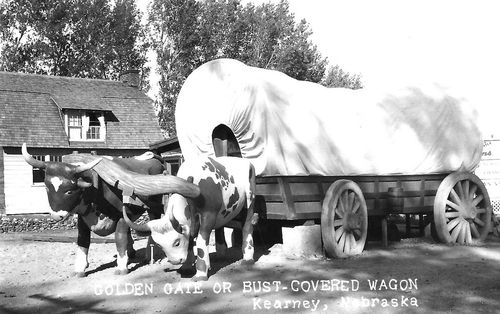
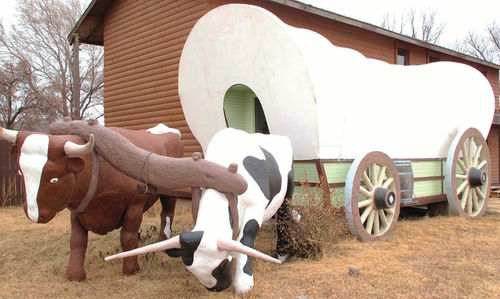

By the way, I would refrain from handing out surveys after the club’s final convention event. Participants might be too apt to focus on their sore feet and the hot (or rainy!) June weather, which is, after all, beyond the control of the event organizers. Wait a week or two and then mail or e-mail a short questionnaire asking attendees which activities they liked most and least, what they would have changed to improve the meet and what new activities they would like to see next time.
On the subject of the weather, why do June, July and August seem to be the most popular months for car-club annual meetings? It’s as if some clubs want to be out in the rain and oppressive heat, both of which discourage members from driving their collector cars.
Especially for groups with few members who have school-age children (which describes most vintage car clubs), it makes more sense, depending on the locale, to meet in mid-to-late September or early October. The weather is cooler for touring in old cars and the summer vacation traffic crunch has passed.
Consider the Moon Car Club, for example. Most of those who attend the Moon conventions have the time and means to travel because they are retired. In their 60s, 70s or even 80s, they want time to socialize and they’re not especially eager to be rushed.
I wasn't sufficiently aware of these needs. A sensitive convention coordinator, however, might have suggested I budget 2 1/2 hours for the 2-hour drive to Kearney, to allow time for a leisurely (late) start and a rest break along the way. (Problem solved with smiles all around!)
A Good Meet…With Better Ones to Come
Despite a stumble or two, Carolyn and I are generally pleased with how the convention played out. Attendees saw five Moon products: four in public and private collections and one trailered to the meet by a club member.
Additionally, for the benefit of those who traveled to the meet from all over the United States and even from overseas, we kept the focus on Nebraska, from its past (particularly its transportation history in the Oregon Trail, transcontinental railroad, Lincoln Highway and Interstate 80) to the present—which, of course, meant serving Nebraska wines and brews at the convention banquet.
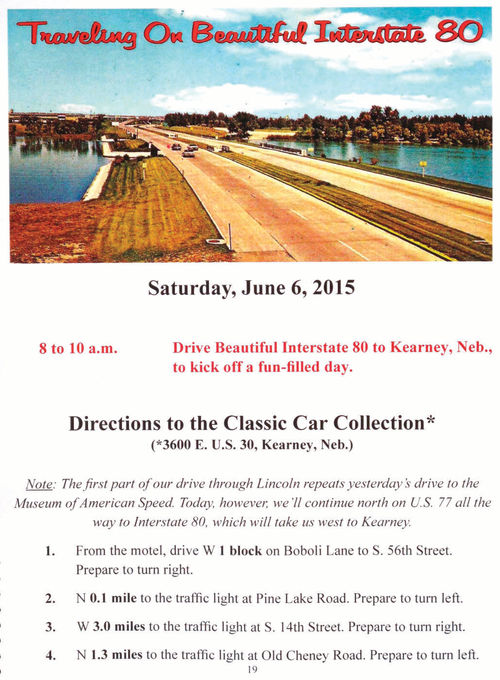
The result, we hope, was an annual club convention that was not only educational and fun but provided would-be restorers of Moon-made autos with plenty of ammunition.
And we certainly had the support of other Moon Car Club members. For instance, Jeff Buckley, club co-founder and outgoing president, spoke at the banquet, prepared name tags and contributed in countless other ways. Terry McBee, a graphic artist, designed a meet poster so striking and colorful as to arouse the envy of car clubs many times the size of the small Moon Car Club (less than 200 members). The souvenir poster posed a dual-cowl Windsor alongside the state capitol building in Lincoln (pg. 22).
Eventually, by learning from the successes and failures of each convention—by continuing to involve more people, energy and ideas—a car club might even plan an annual gettogether that approaches what we hope for in a restored car…perfection.
















